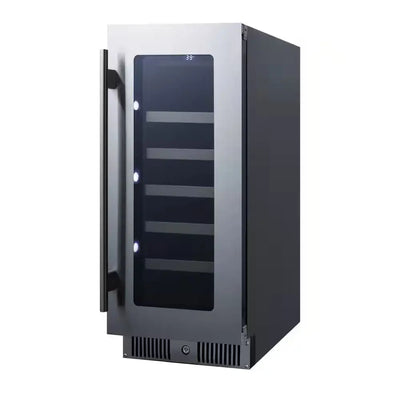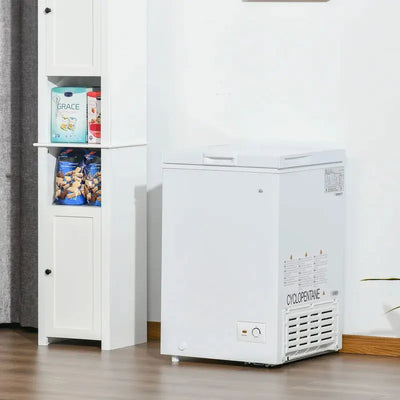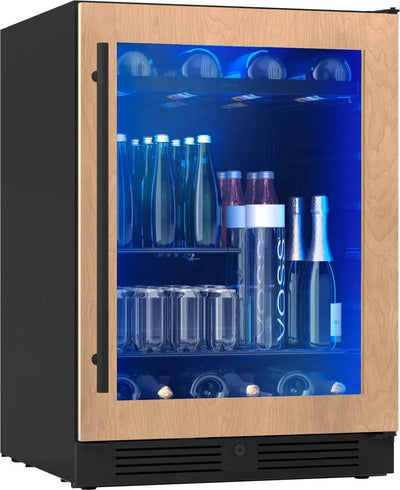Small Chest Freezer Self-Defrosting
Understanding Self-Defrosting Freezers
A self-defrosting freezer, also known as a frost-free freezer, is designed to prevent the build-up of ice automatically. Unlike traditional freezers that require manual defrosting, self-defrosting models use a heating element to melt any accumulated frost. This process typically occurs at regular intervals, ensuring that ice does not form on the walls or shelves. For a detailed explanation on how this technology works, refer to our article on how often does a refrigerator defrost?.
| Feature | Traditional Freezer | Self-Defrosting Freezer |
|---|---|---|
| Defrost Method | Manual | Automatic |
| Frequency of Defrosting | As Needed | Regular Intervals |
| Ice Build-Up | High | Minimal |
| Maintenance | High | Low |
Benefits of Small Chest Freezers
Small chest freezers offer several advantages, making them an ideal choice for a variety of settings, including homes, apartments, garages, and even outdoor spaces. Here are some key benefits:
Space Efficiency: Small chest freezers are compact and fit easily into limited spaces, making them perfect for apartments, condos, and tiny homes. They provide additional storage without taking up too much room.
Energy Efficiency: Many small chest freezers are designed to be energy-efficient, helping you save on electricity bills. For more information on energy-efficient appliances, check out our article on small energy efficient refrigerator.
Cost-Effectiveness: Smaller models are generally more affordable than larger ones, making them a cost-effective option for those on a budget. They provide ample storage space for essentials without the higher price tag.
Versatility: These freezers are versatile and can be used in various settings, such as garages, basements, and backyards. For more ideas on where to place your freezer, see our guide on can I keep my freezer in the garage?.
Ease of Maintenance: With self-defrosting technology, maintenance is minimal. You won't need to manually defrost the freezer, saving you time and effort. For tips on maintaining your freezer, visit our article on how to clean an undercounter freezer.
| Benefit | Description |
|---|---|
| Space Efficiency | Compact design fits easily into limited spaces |
| Energy Efficiency | Designed to save on electricity bills |
| Cost-Effectiveness | More affordable than larger models |
| Versatility | Suitable for various settings |
| Ease of Maintenance | Minimal maintenance with self-defrosting technology |
Understanding the benefits and features of small chest freezers can help you make an informed decision when selecting the best option for your needs. Whether you're a homeowner, chef, or simply someone looking to maximize your storage space, a small chest freezer with self-defrosting capabilities offers a practical and convenient solution. For more tips on optimizing your freezer space, check out our article on how to store rosemary in the fridge.
Factors to Consider
When choosing a small chest freezer that is self-defrosting, there are several factors to take into account to ensure you make the best choice for your needs.
Size and Capacity
The size and capacity of a small chest freezer are crucial considerations. Depending on where you plan to place the freezer—whether it's in a garage, basement, or kitchen—you'll need to ensure it fits comfortably within the available space. Additionally, consider what you'll be storing in it. If you frequently entertain or have a large family, a larger capacity may be necessary.
| Capacity (Cubic Feet) | Suitable For |
|---|---|
| 3-5 Cu Ft | Small families, individuals |
| 5-7 Cu Ft | Medium-sized families |
| 7-10 Cu Ft | Large families, bulk storage |
Energy Efficiency
Energy efficiency is another key factor. An energy-efficient freezer will not only help you save on electricity bills but also reduce your carbon footprint. Look for freezers with an Energy Star rating, which indicates they meet certain energy efficiency guidelines.
| Energy Efficiency Rating | Estimated Annual Energy Use (kWh) |
|---|---|
| Energy Star Certified | 200-400 kWh/year |
| Non-Certified | 400-600 kWh/year |
For more tips on energy-efficient appliances, you can explore our article on small energy efficient refrigerator.
Noise Level
Noise level is an often-overlooked factor but can be important, especially if the freezer will be placed in a living area or near bedrooms. Freezers with lower noise levels will ensure a quieter environment. Most modern freezers are designed to operate quietly, but it's always a good idea to check the decibel (dB) rating.
| Noise Level | Decibel Range (dB) |
|---|---|
| Quiet | 35-45 dB |
| Moderate | 45-55 dB |
| Loud | 55+ dB |
By considering these factors—size and capacity, energy efficiency, and noise level—you can make a more informed decision when selecting a small chest freezer that is self-defrosting. For additional information on maintaining your freezer, read our guide on how to clean an undercounter freezer.
Maintenance Tips
Proper maintenance of your small chest freezer with self-defrosting capabilities ensures its longevity and efficiency. Here are some essential tips to keep your freezer in top condition.
Cleaning and Defrosting
Even with a self-defrosting feature, it's crucial to clean your freezer regularly. This helps prevent the build-up of ice and ensures optimal performance.
- Unplug the Freezer: Always disconnect the appliance from the power source before cleaning.
- Remove All Items: Take out all the food items and store them in a cooler temporarily.
- Wipe Down Surfaces: Use a mixture of mild soap and warm water to wipe down the interior surfaces. Avoid using harsh chemicals.
- Clean the Door Gasket: Ensure the door gasket is free of debris to maintain a proper seal.
- Dry Thoroughly: Make sure all surfaces are thoroughly dried before plugging the freezer back in.
For a detailed guide on cleaning your freezer, check out our article on how to clean an undercounter freezer.
| Cleaning Frequency | Task |
|---|---|
| Monthly | Wipe down interior surfaces |
| Quarterly | Clean door gasket |
| Annually | Deep clean and defrost |
Temperature Regulation
Maintaining the correct temperature in your small chest freezer is essential for preserving the quality of your stored food.
- Set the Right Temperature: The ideal temperature for a small chest freezer is 0°F (-18°C). This ensures that food remains frozen and safe for consumption.
- Regularly Check Temperature: Use an appliance thermometer to monitor the freezer's temperature. Adjust the settings if necessary.
- Avoid Overloading: Do not overfill the freezer, as this can obstruct airflow and lead to uneven cooling.
- Keep the Freezer Full: A full freezer retains cold better than an empty one. If you don't have enough food to fill it, consider adding containers of water.
For more information on temperature settings, visit our article on what temperature is a fridge set at?.
| Temperature Range | Status |
|---|---|
| 0°F (-18°C) | Ideal |
| Above 0°F | Risk of spoilage |
| Below 0°F | Safe but energy-intensive |
By following these maintenance tips, you can ensure your small chest freezer with self-defrosting features operates efficiently and effectively. For more tips on maintaining and troubleshooting your freezer, visit our articles on how often does a refrigerator defrost? and how to clean the inside of a refrigerator.
Maximizing Storage
Efficiently using the space in your small chest freezer self defrosting unit is essential for keeping your food organized and easily accessible. Here are some practical tips on how to organize your freezer and properly package foods.
Organizing Your Freezer
Organizing your small chest freezer can make a significant difference in how much you can store and how easily you can find items. Consider these strategies:
- Categorize Foods: Group similar items together. For example, keep all meats in one section, vegetables in another, and prepared meals in a different area.
- Use Baskets or Bins: Utilize small baskets or bins to separate and categorize food items. This not only helps in organizing but also makes it easier to pull out groups of items without digging through everything.
- Label Everything: Clearly label each item with its name and date of freezing. This will help you keep track of what you have and when it needs to be used.
- FIFO Method: Arrange items using the "First In, First Out" method. Place newer items at the back and older items at the front to ensure nothing gets forgotten and spoils.
- Layering: Stack items by laying them flat and then placing them on top of each other. This maximizes vertical space and makes it easier to see what you have.
Properly Packaging Foods
Proper packaging is vital for maintaining the quality of your food and preventing freezer burn. Here are some tips:
- Use Freezer Bags: Opt for high-quality freezer bags that are designed to withstand freezing temperatures. Squeeze out as much air as possible before sealing to prevent freezer burn.
- Vacuum Sealing: Consider using a vacuum sealer to remove all air from the packaging. This extends the shelf life of your food and maintains its quality.
- Wrap in Foil or Plastic Wrap: For extra protection, wrap items in plastic wrap or aluminum foil before placing them in freezer bags.
- Use Airtight Containers: For soups, stews, and other liquids, use airtight containers that are freezer-safe. Leave some space at the top for expansion as the food freezes.
- Portion Control: Divide large quantities of food into smaller portions before freezing. This makes it easier to thaw only what you need and prevents waste.
| Packaging Material | Best For | Benefits |
|---|---|---|
| Freezer Bags | Meats, Vegetables | Easy to stack, prevents freezer burn |
| Vacuum Sealer Bags | Meats, Bulk Items | Extends shelf life, maintains quality |
| Aluminum Foil | Baked Goods, Meats | Extra protection against freezer burn |
| Airtight Containers | Soups, Stews | Prevents leaks, easy to stack |
Implementing these strategies will help you make the most of your small chest freezer self defrosting unit. For more tips on maintaining your freezer, check out our article on how to clean an undercounter freezer and how often does a refrigerator defrost.
Common Issues
Troubleshooting Self-Defrosting Freezers
Even with the convenience of a self-defrosting small chest freezer, you may encounter some common issues. Troubleshooting these can help you avoid unnecessary repairs and maintain optimal performance.
- Freezer Not Defrosting Properly:
- Cause: Faulty defrost timer, heater, or thermostat.
- Solution: Check if the defrost timer is advancing. If not, it may need replacement. Verify the continuity of the defrost heater and thermostat using a multimeter.
- Excessive Frost Buildup:
- Cause: Door not sealing properly, frequent door openings.
- Solution: Inspect the door gasket for any damages or gaps. Ensure the door is closed tightly each time. Minimize opening the door frequently.
- Freezer Not Cold Enough:
- Cause: Thermostat set too high, or compressor issues.
- Solution: Adjust the thermostat to a colder setting. If the temperature does not change, it could be a compressor issue requiring professional assistance.
- Unusual Noises:
- Cause: Internal components like the evaporator fan motor, or compressor.
- Solution: Identify the source of the noise. If it’s the fan motor, it may need replacing. Compressor noises could indicate a more serious issue.
| Issue | Possible Cause | Solution |
|---|---|---|
| Not Defrosting Properly | Faulty defrost timer/heater/thermostat | Check and replace faulty components |
| Excessive Frost Buildup | Door not sealing, frequent openings | Inspect gasket, ensure door is closed |
| Not Cold Enough | Thermostat setting, compressor issues | Adjust thermostat, seek professional help |
| Unusual Noises | Evaporator fan motor, compressor | Replace fan motor, professional service |
For more detailed tips on maintaining your freezer, visit our article on how to clean an undercounter freezer.
When to Seek Professional Help
While many issues can be resolved with basic troubleshooting, certain problems require professional intervention:
- Persistent Temperature Problems:
- If adjusting the thermostat doesn't resolve temperature issues, it may indicate a deeper problem with the compressor or refrigerant levels.
- Electrical Issues:
- Flickering lights, frequent tripping of circuit breakers, or burnt smells indicate electrical problems that should be handled by a professional.
- Refrigerant Leaks:
- If you notice an oily residue or your freezer is not cooling despite the compressor running, there may be a refrigerant leak.
- Component Failures:
- Issues with internal components like the evaporator fan motor, defrost heater, or thermostat often require specialized skills and tools for replacement.
- Unusual Noises:
- Persistent unusual noises, especially from the compressor, signal that professional assessment is needed.
For further guidance on maintaining your freezer, you might find our article on small energy efficient refrigerator helpful.
| When to Seek Help | Indication |
|---|---|
| Persistent Temperature | Compressor or refrigerant issues |
| Electrical Issues | Flickering lights, tripping breakers |
| Refrigerant Leaks | Oily residue, cooling issues |
| Component Failures | Issues with fan motor, heater, thermostat |
| Unusual Noises | Persistent noises from compressor |
If you need assistance with specific issues, consult a professional to ensure your small chest freezer remains in optimal working condition. For more information on maintaining your appliances, check out our guide on how often does a refrigerator defrost?.
Get Your Upgrade or New Addition at Fridge.com
Whether you're searching for your perfect fridge, freezer, wine fridge, beer fridge, ice maker, or kegerator, we have what you need.
Shop the world's best brands at Fridge.com.
We also have tons of awesome articles about kitchen stuff and home news. Enhance your home, garage, backyard, patio, and office with the coolest essentials. With every necessary type of residential refrigerator or freezer in our collection, we've got you covered.
Elevate your game and shop now at Fridge.com!





















